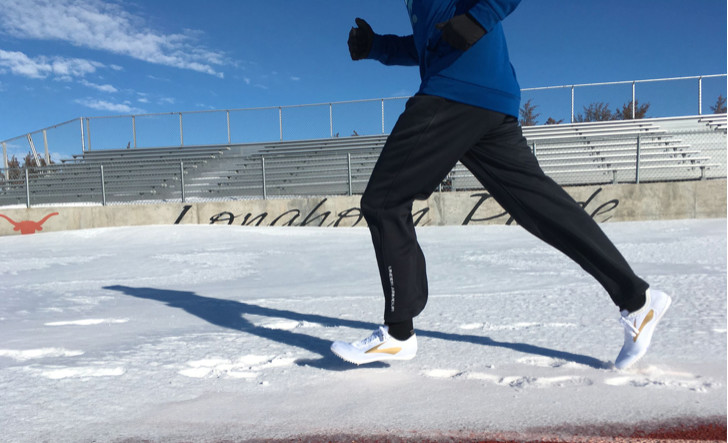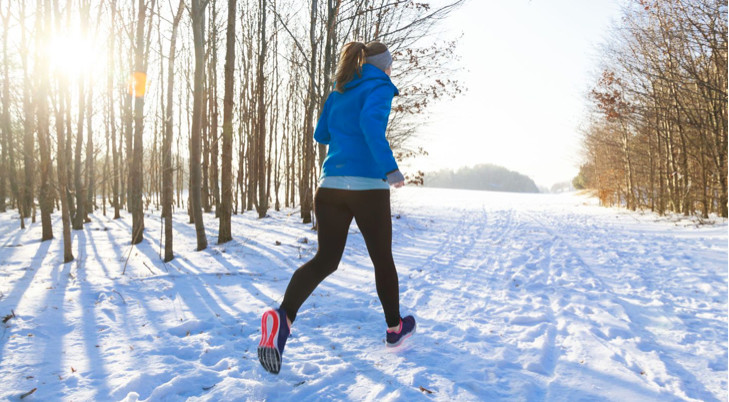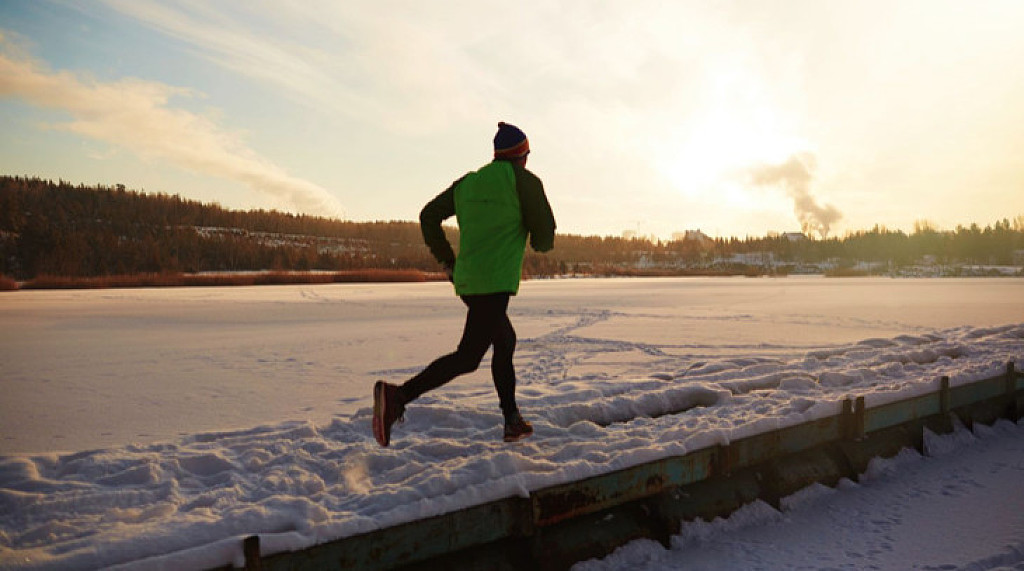Running News Daily
Running News Daily is edited by Bob Anderson. Send your news items to bob@mybestruns.com Advertising opportunities available. Train the Kenyan Way at KATA Kenya and Portugal owned and operated by Bob Anderson. Be sure to catch our movie A Long Run the movie KATA Running Camps and KATA Potato Farms - 31 now open in Kenya! https://kata.ke/
Index to Daily Posts · Sign Up For Updates · Run The World Feed
Think of running in winter as a training tool to make you stronger, tougher, healthier and happier
In the winter of 1939, when the military posted Swedish miler Gundar Hagg to the far north of that nordic country, he devised a unique training program of running on trails through knee- or hip-deep snow. Most days he would do 2500 meters in snow for strength, followed by 2500 meters on a cleared road for turn-over. But during those times when he couldn’t find cleared roads—sometimes for weeks—he’d run up to the full 5K in snow. The next summer he set huge PRs, coming within one second of the mile world record.
Hagg continued his routine in subsequent winters, devising a hilly 5K loop in a different locale that trudged through snowy forest for 3000 meters then ended with a 2000 meter stretch of road where he could run at full speed. He kept improving, and the summer of 1942 he set 10 world records between 1500m and 5,000m.

While Hagg’s routine was created out of necessity, he obviously valued the snowy training. When he moved to a city with a milder climate, he wrote in a training journal, “It will be harder running than any previous year. Probably there won’t be much snow.” And every winter he scheduled trips north to train on the familiar, tough, snowy trails.
Hagg is of a different generation than those of us with web-connected treadmills that can let us run any course on earth from the comfort of our basement, but they’re on to something we might still benefit from: Winter can be an effective training tool. Here are five reasons you’ll want to bundle up and head out regardless of the conditions, indeed, why you can delight when it is particularly nasty out.
1) Winter Running Makes You Strong
As Hagg demonstrated and Robinson points out, winter conditions work muscles and tendons you’d never recruit on the smooth, dry path. A deep-winter run often ends up being as diverse as a set of form and flexibility drills: high knees, bounds, skips, side-lunges, one-leg balancing…
Bill Aris, coach of the perennially-successful Fayetteville-Manlius high school programs, believes that tough winter conditions are ideal for off-season training that has the goal of building aerobic and muscular strength. He sends the kids out every day during the upstate New York winter, and says they come back, “sweating, exhausted and smiling, feeling like they have completely worked every system in their bodies.”

2) Winter Running Makes You Tough
No matter how much you know it is good for you and that you’ll be glad when you’re done, it takes gumption to bundle up, get out the door and face the wintry blast day after day. But besides getting physically stronger, you’re also building mental steel. When you’ve battled snow and slop, darkness and biting winds all winter, the challenges of distance, hills and speed will seem tame come spring.
“If you have trained in deep snow, or battled up a slippery hill into freezing sleet, or lifted your feet out of sticky clay for an hour, the race can hold no fear,” Robinson says. “If you do real winter training, Boston in April can throw nothing at you that you have not prepared for.”
3) Winter Running Improves Your Stride
Running on the same smooth, flat ground every day can lead to running ruts. Our neuromuscular patterns become calcified and the same muscles get used repeatedly. This makes running feel easier, but it also predisposes us to injury and prevents us from improving our stride as we get fitter or improve our strength and mobility. Introducing a variety of surfaces and uncertain footplants shakes up our stride, recruits different muscles in different movement patterns, and makes our stride more effective and robust as new patterns are discovered.
You can create this stride shake-up by hitting a technical trail. But as Megan Roche, physician, ultrarunning champion, clinical researcher at Stanford and Strava running coach, points out, “A lot of runners don’t have access to trails. Many runners are running on flat ground, roads—having snow and ice is actually helpful, makes it like a trail.”
In addition to creating variety, slippery winter conditions also encourage elements of an efficient, low-impact stride. “One thing running on snow or ice reinforces is a high turn over rate and a bit more mindfulness of where your feet are hitting the ground,” Roche says. “And those two things combine to a reduced injury risk.” After a winter of taking quicker, more balanced strides, those patterns will persist, and you’ll be a smoother, more durable runner when you start speeding up and going longer on clearer roads.
4) Winter Running Makes You Healthier
“Exercising in general, particularly during periods of higher cold or flu season has a protective effect in terms of the immune system,” says Roche. You get this benefit by getting your heart rate up and getting moving even indoors, but Roche says, “Getting outside is generally preferable—fresh air has its own positive effect.”
Cathy Fieseler, ultrarunner and sports physician on the board of directors of the International Institute of Race Medicine (IIRM), says there’s not much scientific literature to prove it, but agrees that in her experience getting outside has health benefits. “In cold weather the furnace heat in the house dries up your throat and thickens the mucous in the sinuses,” Fieseler says. “The cold air clears this out; it really clears your head.”
Fieseler warns, however, that cold can trigger bronchospasms in those with asthma, and Roche suggests that when it gets really cold you wear a balaclava or scarf over your mouth to hold some heat in and keep your lungs warmer. “Anything below zero, you need to be dressed really well and mindful of your lungs, making sure that you’re not exposing your lungs to too cold for too long,” Roche says.
5) Winter Running Makes You Feel Better
For all its training and health benefits, the thing that will most likely get most of us out the door on white and windy days is that it makes us feel great. “A number of runners that I coach and that I see in clinics suffer from feeling more depressed or a little bit lower in winter,” says Roche. “Running is a great way to combat that. There’s something really freeing about getting out doors, feeling the fresh air and having that outdoor stress release.”
Research shows that getting outside is qualitatively different than exercising indoors. A 2011 systematic review of related studies concluded, “Compared with exercising indoors, exercising in natural environments was associated with greater feelings of revitalization and positive engagement, decreases in tension, confusion, anger, and depression, and increased energy.” They also found that “participants reported greater enjoyment and satisfaction with outdoor activity and declared a greater intent to repeat the activity at a later date.”
by Podium Runner
Login to leave a comment




